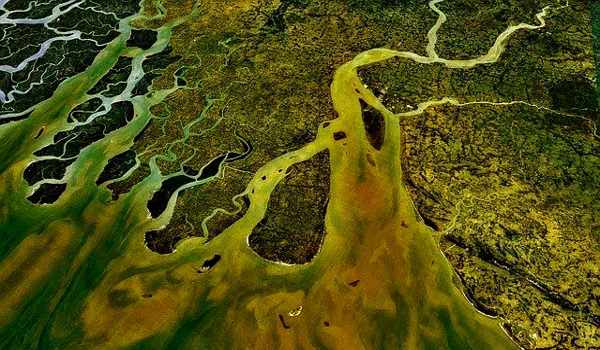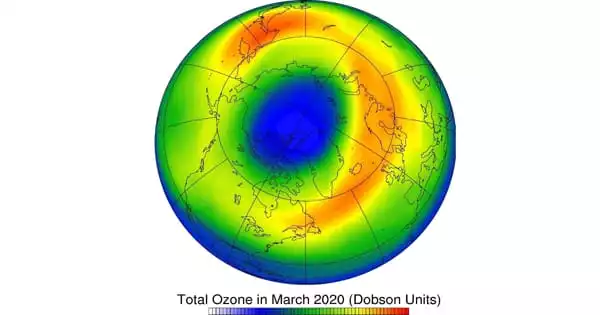River-born particulate-bound species are the most abundant source of mercury in the coastal environment. This portion of mercury is inert and quickly buried in nearshore sediments. River inputs account for only a small portion of reactive mercury (ionic mercury in a solution that is immediately available for reaction). The most significant sources of reactive mercury in the coastal and oceanic environment are atmospheric input and upwelling. Active redistribution of reactive mercury is caused by biologically-mediated processes, which are primarily linked to primary production.
A large portion of reactive Hg is reduced to elemental mercury during this process, which is returned to the atmosphere via evasion, while the remainder is scavenged by particles and transported to deeper oceanic waters. Because of the active atmospheric mercury cycle, the oceans serve as both a source and sink of atmospheric mercury and global oceanic evasion is balanced by deposition.
The presence of mercury in the world’s oceans has ramifications for human health and wildlife, especially in coastal areas where the majority of fishing takes place.
The presence of mercury in the world’s oceans has implications for human health and wildlife, particularly in coastal areas where most fishing occurs. However, while previous studies have focused on mercury deposited directly from the atmosphere, a new study led by Peter Raymond, professor of ecosystem ecology at the Yale School of the Environment, and published in Nature Geoscience shows that rivers are the primary source of the toxic heavy metal along the world’s coasts.
“It essentially rewires the global mercury cycle,” Raymond explains. Previously, it was thought that the majority of mercury in the open ocean was deposited there from the atmosphere and then made its way to coastal areas. However, it now appears that the majority of mercury flows into coastal ocean areas from rivers, where it then moves out into the open ocean.
“Right now, policymakers are primarily concerned with controlling mercury emissions and deposition in the atmosphere, while the contribution of river mercury to coastal oceans is poorly understood,” says Maodian Liu, a postdoctoral fellow in Raymond’s lab. According to him, the new findings highlight the importance of limiting the amount of mercury that enters rivers.

The researchers also looked at changes in the yearly cycle of riverine mercury outflow, discovering that levels were highest in August and September globally. They also looked at which rivers contributed the most mercury; ten rivers account for half of all riverine mercury. The Amazon River ranks first, followed by the Ganges in India and Bangladesh and the Yangtze in China.
While other recent studies have estimated the amounts of riverine mercury, Raymond claims that those studies did not have the same level of specificity in terms of which rivers had the highest levels of mercury and when those levels were highest during the year. “The community hadn’t really agreed on the role of rivers,” he says, adding that this new research helps to strengthen the case that rivers are the primary source of oceanic mercury.
Coal combustion is primarily responsible for atmospheric mercury, which eventually ends up in both the ocean and on landmasses. The mercury carried by rivers into the ocean can come from atmospheric mercury that has settled in soils, as well as other anthropogenic sources such as gold mining and, to a lesser extent, naturally occurring geologic sources. Furthermore, as climate change causes more severe storms and floods, mercury that has been dormant in soils for long periods of time may be transported into coastal oceans, according to the researchers.
Raymond suggests that future research could focus on understanding the processes that affect mercury in those “hotspots” where concentrations are highest in the ocean, as well as investigating the connections to fisheries in those areas. “The most important dietary source of human exposure to mercury is fish consumption,” Liu observes. Finally, a better understanding of how and where mercury enters the oceans will aid in the development of regulations to reduce the amount of mercury in the fish on all of our plates.
Mercury and its byproducts are extremely dangerous. Monomethylmercury (MMHg) compounds are the most toxic, posing a health risk, particularly to the foetal neuro system. Fish consumption regulations issued by Canada, Scandinavia, more than 30 states, the US FDA, the World Health Organization (WHO), and numerous other governments demonstrate the risk to public health.
















